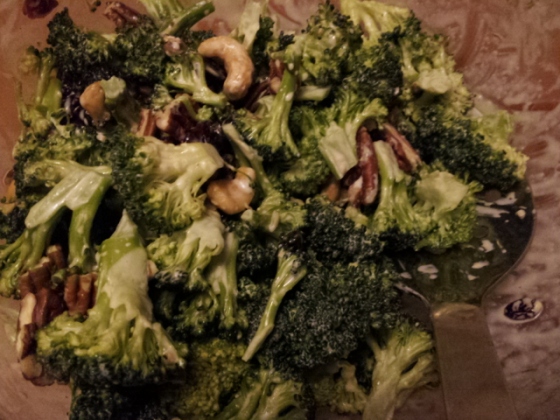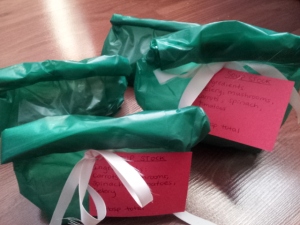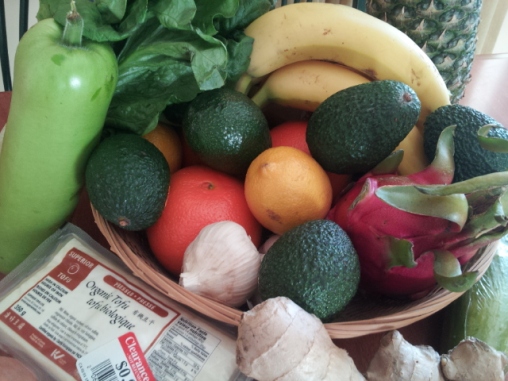
Valentines Day is a special time of year for me because it marks a point in my life whereby I totally switched my way of eating. Three years ago my boyfriend Tom and I decided that we wanted to eat less meat, dairy, and eggs. It is a decision I am happy I made, and I wanted to celebrate by sharing my current thoughts about plant-based eating. This post aims to explore my personal philosophy of veganism while encouraging others to eat more plant-based.
Ultimately, eating plants is something I do for my health and for the environment. I could go on and on about the reasons I went plant-based, but there are lots of resources that can explain it more thoroughly. The documentary that influenced me the most was Vegucated, which is on Netflix. A few other interesting ones are Food Matters, Forks over Knives, and Food Inc. In a nutshell, the meat and dairy industry create more CO2 than the transportation industry, and use way more land and water than any other food production. There are also lots of unappealing things about the fish and seafood industry, one example being excessive pollution caused by the boats that catch the fish. Click here for more information about these points. When it comes down to it, I do not want to support the meat industry, and we vote for what we want with how we spend our money.
Furthermore, eating a wholefoods plant-based (wfpb) diet has consistently shown to be associated with lower rates of Type 2 Diabetes, certain types of cancer, heart disease, obesity, and the list goes on. I found it extremely difficult not to take action on my eating choices when I knew the impact the Standard American Diet can have on the environment and my health (more consumption of meat, dairy, and sugar than ever before in human history).
In addition to my health and the environment, I also care about animal welfare. Besides, cooking vegan is fun, and it is eye-opening to new food and methods of food preparation. For me, making this decision was a no-brainer.

My practice is that I eat vegan as much as I can with some exceptions. First and foremost, when I visit another person’s house I eat what they serve me. I have been allergic to peanuts my whole life, and I have seen the panic and disruption that occurs as a result of it. Asking someone who is not accustomed to a vegan diet to prepare a vegan meal while considering a peanut allergy is a hassle. I want to be a respectful and gracious guest, so I welcome any food when I am a guest at someone else’s house. As long as I will not go into anaphylactic shock. If the meal they prepared happens to be vegan, great!
Another exception that I make is at restaurants. When I made the decision to eat vegan I did not want to feel restricted, and three years in, I am constantly astonished by the lack of vegan options at most restaurants. I want to eat and not be hungry an hour later, and I want to enjoy what I am eating with the people with whom I am eating; eating is and should be a pleasurable experience. As a result, I have certainly been seen ordering eggs or dairy at a restaurant, though I do choose vegan and vegetarian whenever possible, and will choose a vegetarian or vegan restaurant when it is my choice. Ultimately, the more people that put demand on pbwf eating, the more accessible this food will be at restaurants.
The final exception is when the food is free, and this is what I mean: in choosing to eat this food, no additional money is required to pay for it. For example, over the last few years I have worked in restaurants and bakeries where the employees can eat whatever they want, or it is expected that employees try the food. I have always made a big effort to eat vegetarian in these cases, but eating vegan was not always possible, though I did try.
Yes, I eat meat, dairy, and eggs from time to time, but I eat 100% vegan at home, and that is what works for me. When I do stray, I can taste the potency of meat, dairy, and eggs like never before; I appreciate it way more than I did when I ate it every day. As time goes on, I don’t find myself wanting meat, dairy, and eggs as much as I did before, especially meat. I could go the rest of my life without eating meat and would be totally content. And, there are so many alternatives to typically animal-centered meals, I haven’t even tried them all. But, if I truly have a craving for eggs, it’s not like I’ll never have them again.
What I am trying to say is that why do we have to look at the world so black and white? Why do we see people as herbivores or omnivores? What I have done for three years as a flexitarian and opportunivore has worked well for me, and I believe it (or variations of it) could work for many people out there. Even simply reducing one’s intake of animal products is a huge success in my view.

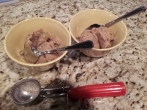
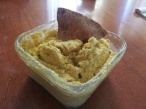
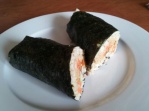
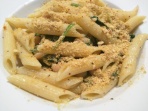

When I am eating vegan for a long period of time I honestly do not miss meat, eggs, and dairy. I have equipped myself with the tools to create delicious meals and snacks to enjoy every day. My taste buds and my body love it; I am thriving, not depriving, on this food.
Some people claim that eating vegan adds a lot more preparation, but really, eating healthy, wholesome meals always adds more preparation than re-heating a pre-made meal. And, some people wonder if eating plants from across the world is just as bad for the environment; the answer is no, according to my friend who is doing a Master’s level research project in Environmental Sciences, comparing vegans and loco-vore omnivores (ie. the 500 mile diet). Eating local is a good choice too, but the animal industry still has its toll on the environment, more so than the produce shipped from across the globe.
My philosophy is that every moment that I spend eating wfpb is an investment in the planet and my longevity; I want to live a disease-free and active life-style as long as possible, and I do not want to be a burden on the health-care system or my loved ones. This is a proactive stance I am taking to my health.

So, where do I get my protein? Iron? Calcium? B-12? Plants! Beans, lentils, soy, tofu, tempeh, seitan, whole grains, nuts, seeds, nutritional yeast, dark chocolate, leafy greens, fruits, and vegetables. I eat gluten because it is a protein; I juice or blend almost every day (which is easy-peasy); I hardly ever eat plain raw veggies by themselves because that is boring; and, I make lots of food from scratch (see my other blog posts and references below). I make time for this important ritual we do about three times a day; I ate vegan while completing a Master’s degree, and continue to eat vegan as I train regularly at the climbing gym (and I’m stronger than ever before, I might add).
And, finally, I get my blood tested about once a year to ensure my iron and B-12 are in check; besides, even if I found out I was low in something, taking a supplement now and then is way less expensive than the medical bills and prescriptions from a life-long poor diet. And, it is totally possible to get all the nutrition you need from a variety of plant-based foods.


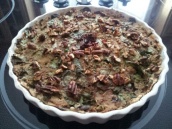




Three years ago around this time I knew that there was only one way to go: plant-based. At first I had no idea what I was doing, and thought it would be impossible to live without cheese and eggs. If you had told me four or five years ago that I would become a vegan eater I would have been confused and would not have believed you. I wrote this post because I want to make sure as many people as possible know that the world is not black and white, and neither is our diet. Our species evolved to survive on whatever was available, and now there is so much food at our fingertips that we have a choice to make about what goes into our bodies. I choose this ethical, environmentally-friendly, inexpensive, and healthful lifestyle that can have a real impact on our future.
And, if I can do it with a peanut allergy, I can only imagine how much easier it could be without one.

Cookbook Recommendations
Crazy Sexy Kitchen by Kris Carr
Crazy Sexy Juice by Kris Carr
Oh She Glows by Angela Liddon
Plant Powered Families by Dreena Burton
Eat, Drink, and Be Vegan by Dreena Burton
Let them Eat Vegan by Dreena Burton
Thug Kitchen by Matt Holloway and Michael Davis
My New Roots: Inspired Plant-Based Recipes for Every Season by Sarah Britton
The Vegan Cookbook by Paragon Books
Blogs I follow
Ohsheglows.com
kriscarr.com
plantpoweredkitchen.com
antidotesmagazine.com
stephdavis.co

